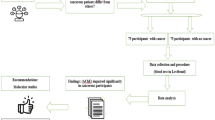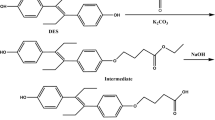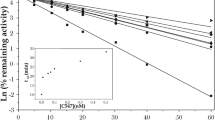Abstract
IN 1929, Dale and Dudley1 described the parallel bioassay technique. Using three test preparations, these authors found that with acetylcholine as reference standard, the material extractable from ox spleen assayed identically in each instance. These results greatly supported other evidence obtained in that investigation and enabled them to conclude that the active material was acetylcholine. However, twenty-four years later, Banister et al.2 showed that, in addition to acetylcholine, ox spleen extracts contained propionyl choline and other unidentifiable material which had acetylcholine-like activity. Clearly the parallel bioassay did not differentiate between the components of the mixture of active compounds present in the extract. In 1933, Chang and Gaddum3 showed that acetylcholine could be distinguished from pure samples of other choline esters on several biological test preparations. Recently, Hosein and his associates4,5 have shown that, on the basis of micro-chemical analysis, the material with acetylcholine-like activity extractable from rat brain was a mixture of at least three choline esters and of four betaine CoA esters. Because of the reliance on the method of parallel bioassay to identify acetylcholine in extracts and tissue preparations6–8, it was decided to determine whether this method could actually identify acetylcholine in mixtures of substances, all of which possessed acetylcholine-like activity.
This is a preview of subscription content, access via your institution
Access options
Subscribe to this journal
Receive 51 print issues and online access
$199.00 per year
only $3.90 per issue
Buy this article
- Purchase on Springer Link
- Instant access to full article PDF
Prices may be subject to local taxes which are calculated during checkout
Similar content being viewed by others
References
Dale, H. H., and Dudley, H. W., J. Physiol., 68, 97 (1929).
Banister, J., Whittaker, V. P., and Wijesundera, S., J. Physiol., 121, 55 (1953).
Chang, H. C., and Gaddum, J. H., J. Physiol., 79, 255 (1933).
Hosein, E. A., Proulx, P., and Ara, R., Biochem. J., 83, 341 (1962).
Hosein, E. A., and Orzeck, A., Int. J. Neuropharm., 3, 71 (1964).
Szerb, J. C., Nature, 197, 1016 (1963).
Ryall, R. W., Biochem. Pharm., 12, 1055 (1963).
McLennan, H., Curry, L., and Walker, R., Biochem. J., 89, 163 (1963).
Hosein, E. A., Smart, M., and Hawkins, K., Canad. J. Biochem. Physiol., 38, 837 (1960).
Krimberg, R., and Wittandt, W., Biochem. Z., 251, 229 (1932).
Hosein, E. A., and Ara, R., J. Pharm. Exp. Ther., 135, 230 (1962).
MacIntosh, F. C., and Perry, W. L. M., Methods in Med. Res., 3, 78 (1950).
Author information
Authors and Affiliations
Rights and permissions
About this article
Cite this article
HOSEIN, E., KOH, T. Inability of Parallel Bio-assay to recognize Acetylcholine in Mixtures of Substances with Acetylcholine-like Activity. Nature 205, 1119–1120 (1965). https://doi.org/10.1038/2051119a0
Issue Date:
DOI: https://doi.org/10.1038/2051119a0
This article is cited by
Comments
By submitting a comment you agree to abide by our Terms and Community Guidelines. If you find something abusive or that does not comply with our terms or guidelines please flag it as inappropriate.



